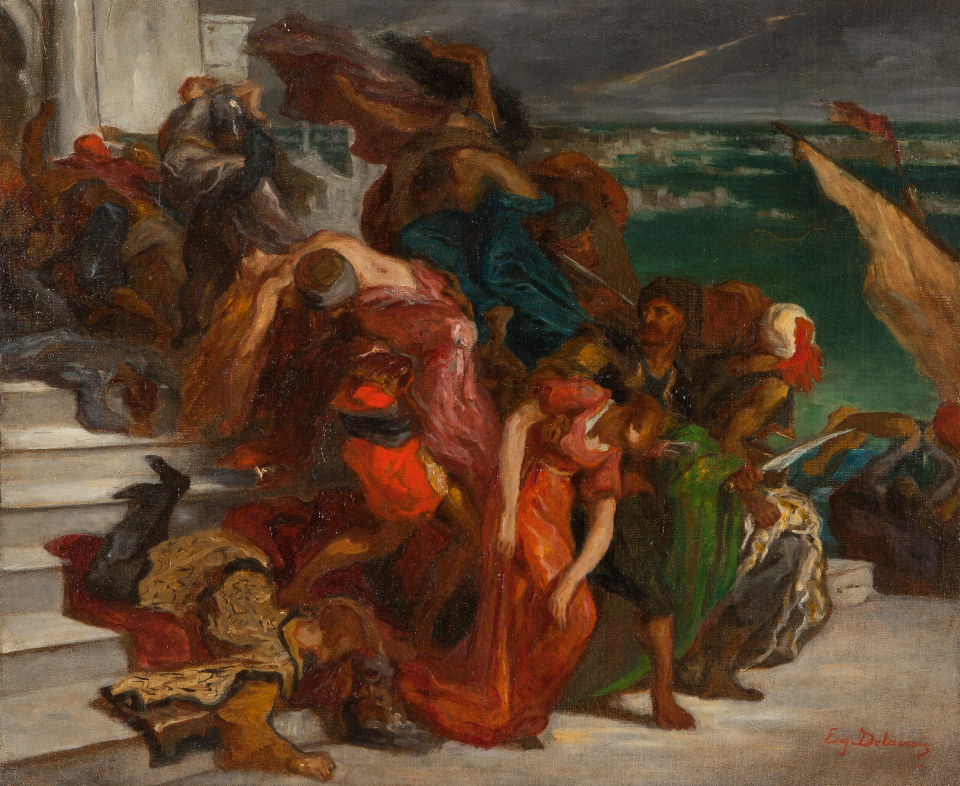nicht ausgestellt
Intro
Eugène Delacroix has filled this small-format painting with a wealth of energy. The figures in the compact group are closely intertwined. Arrayed in bright red clothes, their struggling bodies merge in the turmoil of the fight, intensifying the scene’s dramatic qualities. The motif of bride capture appears in a number of the painter’s works, who was declared one of the main representatives of French Romanticism by his contemporaries.
It displays his interest in the depiction of existential hardship, candidly presenting us with a picture of violence and death, imprisonment and resistance. Exotic-oriental subjects appear frequently in the work of Delacroix, who took an intense interest in political conflicts such as the Greek War of Independence against the Ottoman Empire (1821–32) and undertook a memorable trip to Morocco (1832). In this late painting—its small format and sketch-like execution suggesting a draft—powerlessness and strength, resistance and ruthless appropriation are irreconcilably juxtaposed.
Background
In contrast to German Romanticism, Romantic painting in France – with Eugène Delacroix and Théodore Géricault (1791–1824) as its main representatives – was characterised by exotic and dramatic subjects and driven by an impetus that combined picturesque detail with strong colours. Delacroix in particular saw himself with his passionate painting as the very opposite of the classical artist, Jean-Dominique Ingres (1780–1867).
At the same time, his interest in the intrinsic value of colour made him one of the precursors of Impressionism. His sketch-like painting, »Abduction of Turkish Women«, is an example of his dynamic style, which has its roots in the Baroque painting tradition. The diagonal composition is built up like a stage and is full of diverging directions of movement, which help to underline the dramatic nature of the brutal event. The subject reflects the increasing interest in Orientalism and can be traced back to Delacroix’s journey to the Orient in 1832, to which the treatment of light and the brilliant colours can also be ascribed.
Kunsthalle Mannheim
